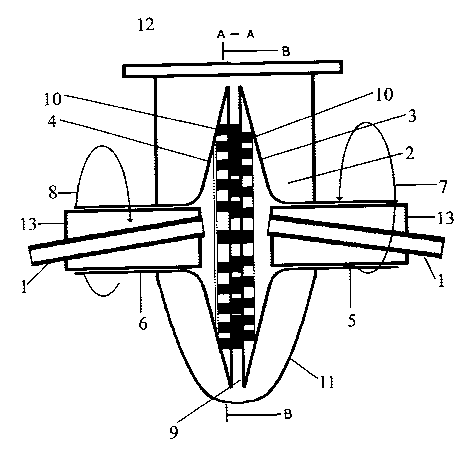Some of the information on this Web page has been provided by external sources. The Government of Canada is not responsible for the accuracy, reliability or currency of the information supplied by external sources. Users wishing to rely upon this information should consult directly with the source of the information. Content provided by external sources is not subject to official languages, privacy and accessibility requirements.
Any discrepancies in the text and image of the Claims and Abstract are due to differing posting times. Text of the Claims and Abstract are posted:
| (12) Patent Application: | (11) CA 2387852 |
|---|---|
| (54) English Title: | MICRONIZING DEVICE AND METHOD FOR MICRONIZING SOLID PARTICLES |
| (54) French Title: | DISPOSITIF DE MICRONISATION ET PROCEDE DE MICRONISATION DE PARTICULES SOLIDES |
| Status: | Deemed Abandoned and Beyond the Period of Reinstatement - Pending Response to Notice of Disregarded Communication |
| (51) International Patent Classification (IPC): |
|
|---|---|
| (72) Inventors : |
|
| (73) Owners : |
|
| (71) Applicants : |
|
| (74) Agent: | MCCARTHY TETRAULT LLP |
| (74) Associate agent: | |
| (45) Issued: | |
| (86) PCT Filing Date: | 2000-10-19 |
| (87) Open to Public Inspection: | 2001-04-26 |
| Availability of licence: | N/A |
| Dedicated to the Public: | N/A |
| (25) Language of filing: | English |
| Patent Cooperation Treaty (PCT): | Yes |
|---|---|
| (86) PCT Filing Number: | PCT/FI2000/000910 |
| (87) International Publication Number: | WO 2001028690 |
| (85) National Entry: | 2002-04-18 |
| (30) Application Priority Data: | ||||||
|---|---|---|---|---|---|---|
|
The invention concerns a micronizing device comprising a grinding housing with
an outlet opening at one end, two coaxially positioned rotatably driven hollow
axles entering the grinding house through two opposite side walls thereof,
each of said axles having an inner end provided with a conically enlarging
disc defining a grinding chamber, a circumferential outlet gap being formed
between said discs, each disc being provided with at least one concentrically
positioned ring of axially directed taps or wings near the circumference of
the disc, the rings having different diameters, so that said discs can be
driven to rotate in opposite directions, two acceleration nozzles are brought
into the grinding chamber through the hollow axles, said nozzles being
directed towards a common point in the grinding chamber away from a center
point of said grinding chamber. The invention concerns also a method using
said device.
L'invention concerne un dispositif de micronisation comprenant un compartiment de broyage dont une extrémité est pourvue d'une ouverture de sortie, deux axes creux à entraînement rotatif placés de manière coaxiale et pénétrant dans ce compartiment de broyage à travers deux parois latérales, chacun desdits axes possédant une extrémité interne pourvue d'un disque à élargissement conique définissant une chambre de broyage, une fente de sortie circonférentielle étant ménagée entre ces disques, chaque disque étant pourvu d'au moins un anneau concentrique de prises ou d'ailettes orientées axialement au voisinage de la circonférence du disque, ces anneaux présentant des diamètres différents, de façon que les disques puissent être entraînés et tourner dans des sens opposés. Deux buses d'accélération sont amenées dans la chambre de broyage par l'intermédiaire des axes creux, ces buses étant dirigées vers un point commun dans la chambre de broyage dans un sens opposé à un point central de cette chambre. L'invention concerne également un procédé utilisant ce dispositif.
Note: Claims are shown in the official language in which they were submitted.
Note: Descriptions are shown in the official language in which they were submitted.

2024-08-01:As part of the Next Generation Patents (NGP) transition, the Canadian Patents Database (CPD) now contains a more detailed Event History, which replicates the Event Log of our new back-office solution.
Please note that "Inactive:" events refers to events no longer in use in our new back-office solution.
For a clearer understanding of the status of the application/patent presented on this page, the site Disclaimer , as well as the definitions for Patent , Event History , Maintenance Fee and Payment History should be consulted.
| Description | Date |
|---|---|
| Application Not Reinstated by Deadline | 2004-10-19 |
| Time Limit for Reversal Expired | 2004-10-19 |
| Deemed Abandoned - Failure to Respond to Maintenance Fee Notice | 2003-10-20 |
| Letter Sent | 2002-10-07 |
| Inactive: Cover page published | 2002-10-02 |
| Inactive: Notice - National entry - No RFE | 2002-09-30 |
| Inactive: Single transfer | 2002-07-11 |
| Application Received - PCT | 2002-07-08 |
| National Entry Requirements Determined Compliant | 2002-04-18 |
| Application Published (Open to Public Inspection) | 2001-04-26 |
| Abandonment Date | Reason | Reinstatement Date |
|---|---|---|
| 2003-10-20 |
The last payment was received on 2002-04-18
Note : If the full payment has not been received on or before the date indicated, a further fee may be required which may be one of the following
Please refer to the CIPO Patent Fees web page to see all current fee amounts.
| Fee Type | Anniversary Year | Due Date | Paid Date |
|---|---|---|---|
| Registration of a document | 2002-04-18 | ||
| Basic national fee - standard | 2002-04-18 | ||
| MF (application, 2nd anniv.) - standard | 02 | 2002-10-21 | 2002-04-18 |
Note: Records showing the ownership history in alphabetical order.
| Current Owners on Record |
|---|
| MICROPULVA LTD. OY |
| BCDE GROUP WASTE MANAGEMENT LTD. OY |
| Past Owners on Record |
|---|
| HANNU SUOMINEN |
| JOUKO NIEMI |
| VEIKKO ILMASTI |